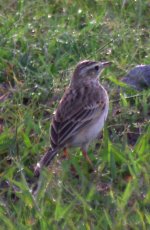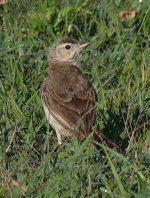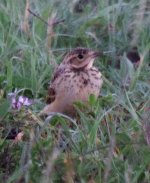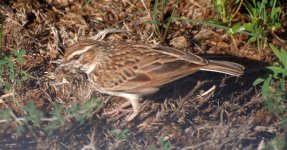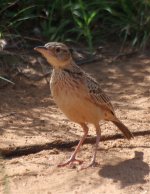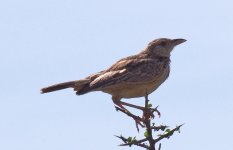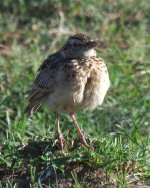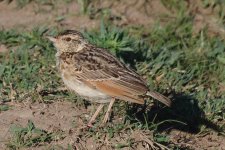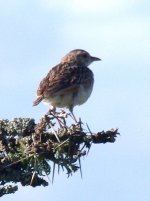I'd like to check that Photo 1 is Grassland Pipit, and Photo 2 is Plain-backed Pipit.
Then, the others are larks (I think) that I can't get. I had a hundred or more photos of larks, most of them Pink-breasted and Rufous-naped.
Photo 3: I just can't work out, though it has clear markings (early morning light; Sweetwaters).
Photo 4: I wonder if this is Fawn-coloured Lark (Samburu)
Photo 5: The posture, colour and general size made me wonder if this is Red-winged Lark (Samburu)
Then, the others are larks (I think) that I can't get. I had a hundred or more photos of larks, most of them Pink-breasted and Rufous-naped.
Photo 3: I just can't work out, though it has clear markings (early morning light; Sweetwaters).
Photo 4: I wonder if this is Fawn-coloured Lark (Samburu)
Photo 5: The posture, colour and general size made me wonder if this is Red-winged Lark (Samburu)





